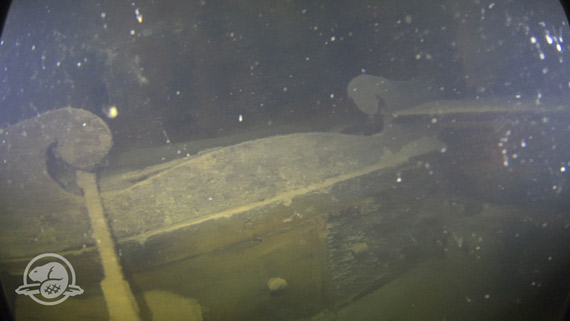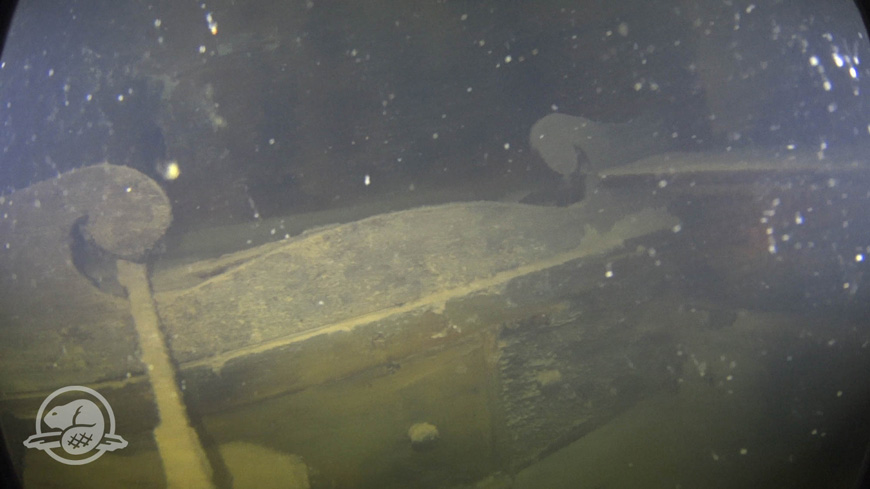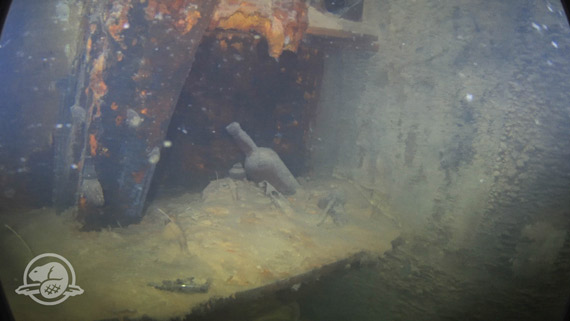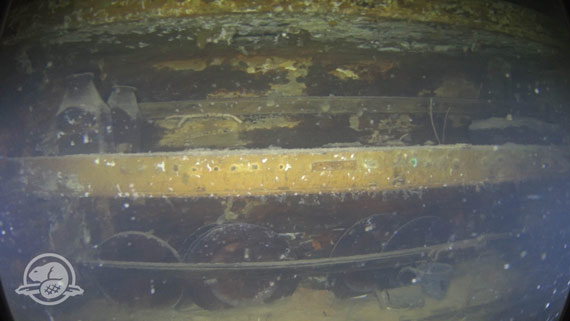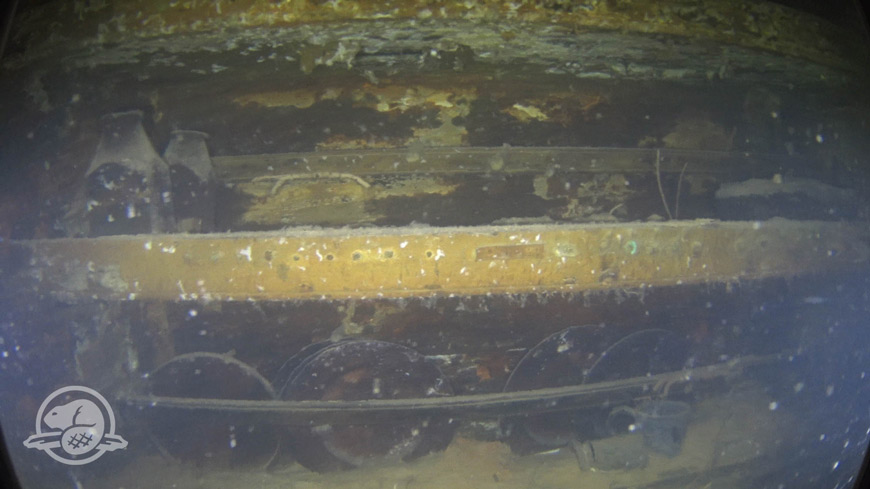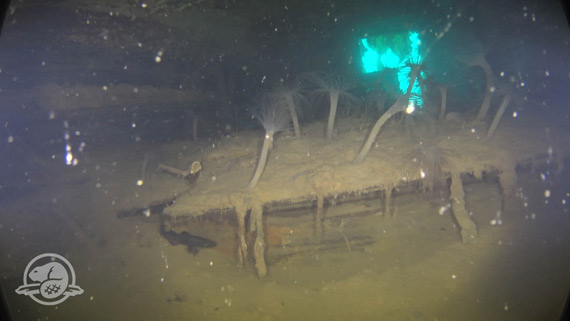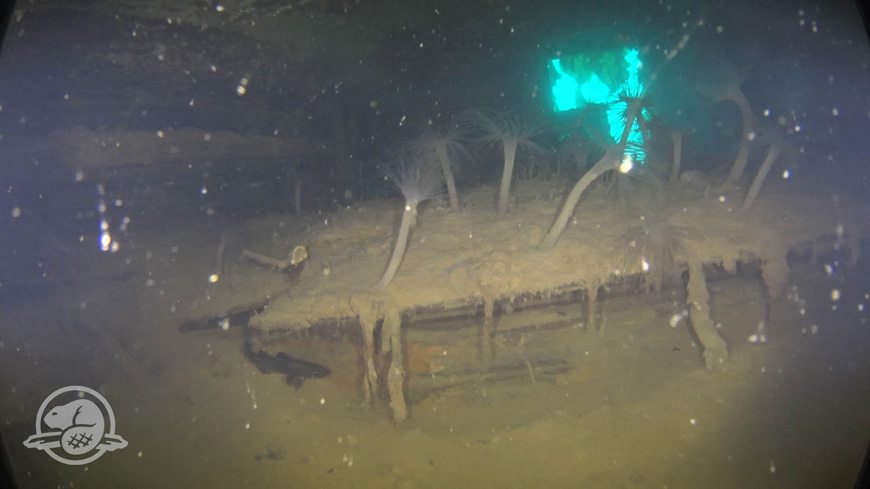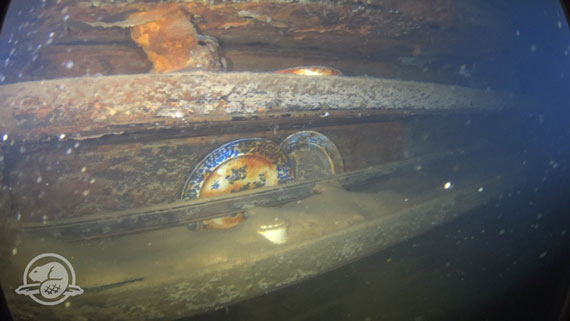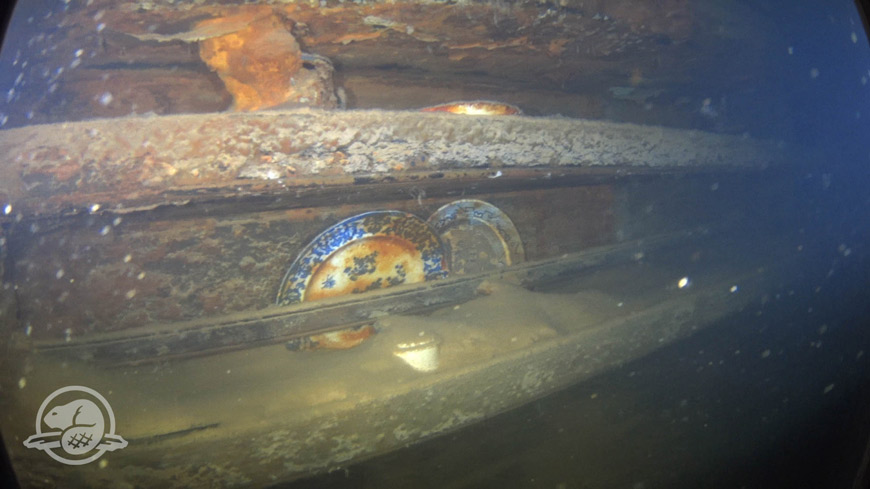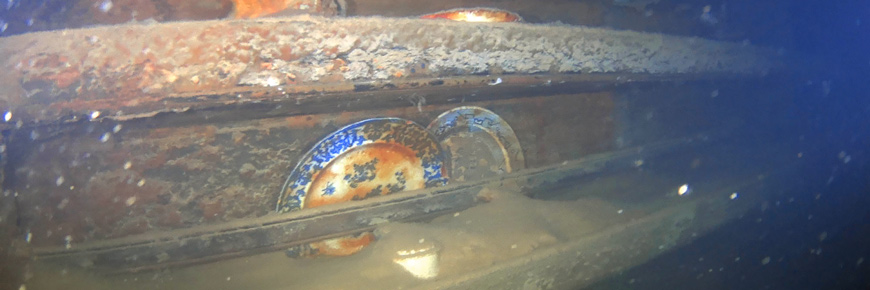
Guided tour of HMS Terror
Wrecks of HMS Erebus and HMS Terror National Historic Site
Take an unprecedented look inside the wreck of HMS Terror – lost at sea over 170 years ago!
Transcript
Introduction
0:00-01:20 In 1845, Sir John Franklin set sail from England with HMS Erebus and HMS Terror in search of a Northwest Passage across what is now Canada's Arctic. After being lost for over 170 years, the wreck of HMS Erebus was discovered in 2014 followed by HMS Terror in 2016.
The Government of Canada’s on-going exploration of the Franklin wrecks is a collaboration with the Inuit Heritage Trust and based on the advice of the Franklin Interim Advisory Committee. The goal is to protect and explore the Wrecks of HMS Erebus and HMS Terror National Historic Site of Canada to better understand the events of the Franklin Expedition. This national historic site is one of the most unique national treasures in Canada and is why, with the exception of Inuit harvesting rights, access is strictly prohibited without a special permit.
This is one of the largest, most complex underwater archeological exploration in Canadian history.
At the beginning of this year’s research season, Parks Canada’s Underwater Archaeology Team travelled to the wreck of HMS Terror aboard the RV David Thompson -- Parks Canada’s new Research Vessel. Over seven days, under exceptional weather conditions, the interior spaces of the wreck of HMS Terror were scientifically and systematically explored for the first time.
The two fabled shipwrecks are situated near King William Island in western Nunavut and are important events in the history of the Canadian Arctic. They hold answers about the mysterious disappearance of the prestigious Royal Navy ships and their crews.
These images serve as confirmation that HMS Terror has been well-preserved by the cold deep water of Terror Bay and layers of protective sediment.
Exterior of the vessel
1:20 – 1:31 The wreck of HMS Terror lies majestically on the seabed. The bow of the wreck is particularly spectacular with its bowsprit that slices through the blurry waters.
1:40 – 1:50
The ship’s wheel remains upright, having withstood the test of time.
1:50 – 1:56
A small boat, originally suspended from HMS Terror’s davits on the upper deck, now rests alongside the ship.
1:56 – 2:06
To explore the interior of the ship, a small remotely operated vehicle is inserted into openings on the upper deck.
Interior of the vessel
2:06 – 2:16
In the darkness of the lower deck, partitions separating different living spaces are still in place.
2:16 – 2:42
In the forecastle -- the sailors’ communal living space near the bow of the ship, shelves on the inside walls bear witness to meals taken in groups, which was a daily ritual for sailors far from home. Plates, bowls, bottles, cups, drinking glasses …
2:42 – 3:08
Towards the stern, a long corridor leads through the darkness, revealing the open doors of individual officers’ cabins.
3:08 – 3:32
A chamber pot, writing desk, bunk, and drawers. Each cabin is a personal world now frozen in time.
3:32 – 3:41
Two firearms still hang on a wall, prisoners of rust formed over the decades.
3:42 – 4:01
In one of the storerooms, many wooden niches still hold upright bottles
Exterior, stern of the vessel
4:01 – 4:27
At the stern of the ship, the gallery windows, some of which still have their double panes, allow us to see inside what was originally Captain Francis Crozier’s cabin, its contents trapped in ice-cold water and sediment.
Interior of Captain’s cabin
4:28 – 4:50
Inside his cabin, a work desk dominates the centre of the room, with sealed drawers that almost certainly contain essential information about the Franklin Expedition. These images confirm that the possibility of finding written documents is not only real, but that an important number of them are likely to be discovered.
An overturned low-table lies in front of the desk, a nearby armchair projects out of the protective sediment.
4:50 – 4:58
To starboard, unidentified objects on shelves are mostly covered by silt.
4:58 – 5:05
To port, a tripod and a large case with unknown contents.
Conclusion
5:05 – 5:45
These stunning images from HMS Terror will help unravel the secrets of the Franklin Expedition.
They will take Parks Canada’s Underwater Archaeology Team months to analyze, and, in time, the new information that they reveal will contribute to the understanding of Inuit and historical accounts of the Franklin Expedition and enable the stories of the sailors and officers of Franklin’s crew to be told like never before. …and thousands of artifacts are still left to be discovered as the wrecks of HMS Erebus and HMS Terror are explored in the future.
Parks Canada recognizes the invaluable role of Inuit, the Government of Nunavut, and all partners, in the discoveries of the Franklin wrecks. Most importantly, the discoveries would not have been possible without the support, guidance, advice and knowledge shared so generously by Inuit.
Working together, the Government of Canada and Inuit are managing and protecting the Wrecks of HMS Erebus and HMS Terror National Historic Site and as well as the important role of Inuit in sharing the fascinating story of the Franklin Expedition wrecks and their extraordinary knowledge of the Arctic with Canadians and the world.
5:50 – 6:00
On-screen disclaimer:
The Wrecks of HMS Erebus and HMS Terror National Historic Site is protected by a restricted area and activity order on the recommendation of the Franklin Interim Advisory Committee. Entering the site without a permit is an offence under the Canada National Parks Act, and is punishable by a fine of up to $500,000. The wrecks sites are actively and remotely monitored by the Government of Canada, in partnership with Inuit Guardians based in Gjoa Haven. These restrictions do not affect the right of access by Nunavut Inuit for harvesting as provided in the Nunavut Agreement.
Photo gallery
- Date modified :
